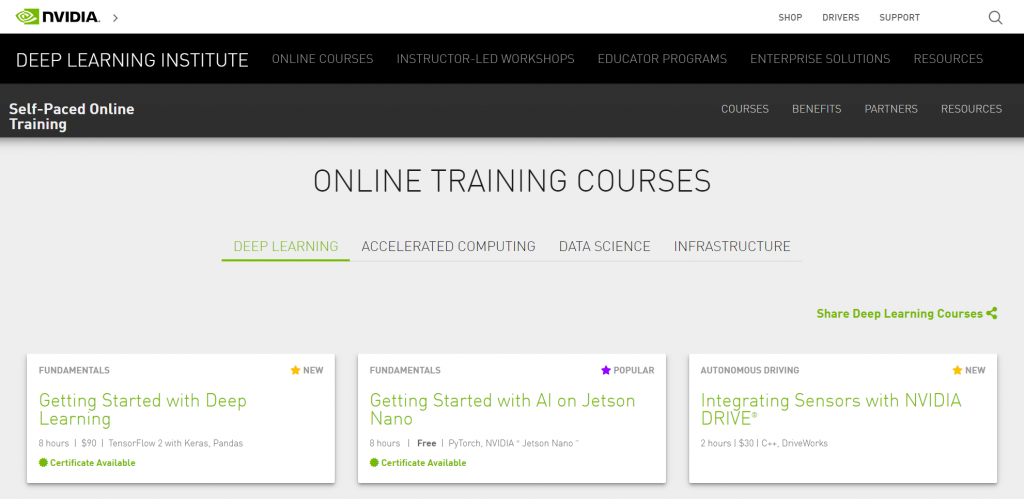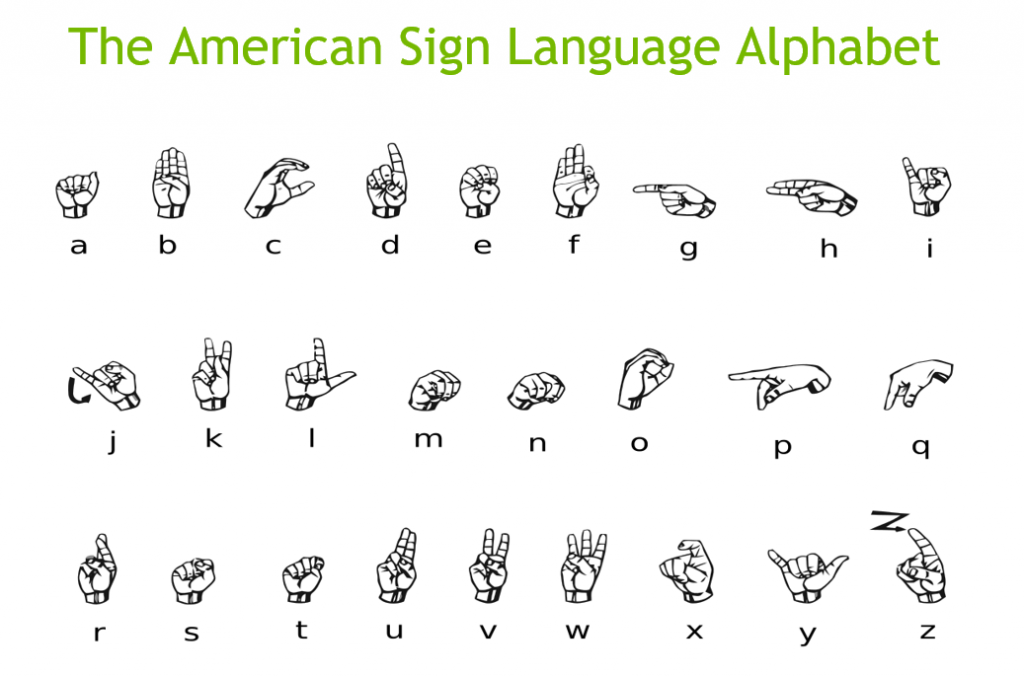
We’ve just recently completed NVIDIA Deep Learning course ‘Getting Started with Deep Learning‘. Despite already being quite familiar with DL after taking Andrew’s Ng Deep Learning Specialization, we felt like refreshing our knowledge a little bit, and that an 8h course (probably more taking into account the assignments and labs), would be just the way to do this.
Also, being created by almighty GPU maker NVIDIA, we thought we could get some cool insight into how to optimise DL for parallel processing using GPUs. However, after the course, we were left a bit like this confused robot on their site.

We heard from NVDIA’s courses on a couple of podcasts, and since then we had been waiting to try them. We went in this course with a full weekend ahead, wanted to really squish the most out of the 8h of content they prommis, but in reality it took a lot less than this to complete it, and we felt like we learned almost nothing.
Lets see the main characteristics of the course:
NVIDIA Deep Learning review
Course Summary
- Summary: In this course, you’ll learn how deep learning works through hands-on exercises in computer vision and natural language processing. You’ll train deep learning models from scratch, learning tools and tricks to achieve highly accurate results. You’ll also learn to leverage freely available, state-of-the-art pre-trained models to save time and get your deep learning application up and running quickly.
- Price: 90$, so not cheap at all, however coming from an institution like this you might think it is worth it.
- Duration: 8h. We are not sure where these 8 ours came from. The course consists on 6 video lessons (from 6 to 20 mins max), some slides to go along with these lessons, and one lab for each lesson plus a final assignment. For you to take 8h to complete the course, you would have to spend a little less than 1h on each lab, which we think is too much, as most of the code is given to you to begin with and there is little thinking that you have to do. These labs are mostly about reading code descriptions and running blocks on JupyterLab.
- Howard, Jeremy (Author)
- English (Publication Language)
- 621 Pages - 08/25/2020 (Publication Date) - O'Reilly Media (Publisher)
Learning Objectives
By participating in this course, you will:
- Learn the fundamental techniques and tools required to train a deep learning model
- Gain experience with common deep learning data types and model architectures
- Enhance datasets through data augmentation to improve model accuracy
- Leverage transfer learning between models to achieve efficient results with less data and computation
- Build confidence to take on your own project with a modern deep learning framework
Course Details
Prerequisites:
- An understanding of fundamental programming concepts in Python 3 such as functions, loops, dictionaries, and arrays.
- A familiarity of Pandas datastructures.
- An understanding of how to compute a regression line.
Tools, libraries, frameworks used: TensorFlow 2 with Keras, Pandas
Course content:
The course will start teaching you about the main concepts of AI, and the history of Artificial Neural Networks. You will then attack the Hello world of Machine Learning: The MINST data set for image classification using a traditional neural network.
Then you will expand to more complex tasks, learn about how neural networks are trained, and optimised, and try to solve the American Sign Language classification task

While this all might be cool and exciting for someone with no previous knowledge of DL, if you’ve already studied it a bit, this course will be a waste of time and money, as it covers the topics very superficially and does not go into the depth on anything.
After this you will see Convolutional Neural Networks and Data Augmentation, and use transfer learning on the famous ImageNET data set to adapt to a specific, more custom image classification task.
Lastly you will end with recurrent neural networks and a little bit of NLP.
Course Material
For taking this course you will get a nice and shiny certificate.
Also, you will be able to download all the slides and the notebooks from the labs. Lastly, you will be able to access the content online for 1 year after the purchase.
Summary of NVIDIA Deep Learning: Getting Started with Deep Learning
Following the general tone of the review, you can probably guess what our conclusion is. NVIDIA sells the brand more than the content, on a very expensive course for the length and depth of the content it covers. Our NVIDIA Deep Learning course was a disappointment, but we will try out more in the future to try to get rid of this feeling.
The Deep Learning specialisation that we mentioned earlier covers all the material in much more depth, and is a x20 better course than this one in terms of content.
We invite you to check our list of awesome Machine Learning courses with reviews to see if you find something better for you, as from our point of view this course is not worth it.
Also, for more content on Deep Learning, check out the following:
- Deep Learning from scratch book review: the perfect book for those with Machine Learning, Python, and Math knowledge that want to get a profound knowledge fo the nitty gritty details of how Artificial Neural Networks work.
- Deep Learning by Goodfellow et al. Find the review here.
- Grokking Deep Learning by Andrew Task. Find the review here.
- Deep Learning: A Visual Approach
- No Starch Press
- ABIS BOOK
- Glassner, Andrew (Author)
- English (Publication Language)
Tags: NVIDIA Deep Learning, Deep Learning Course, Deep Learning online.
Subscribe to our awesome newsletter to get the best content on your journey to learn Machine Learning, including some exclusive free goodies!


